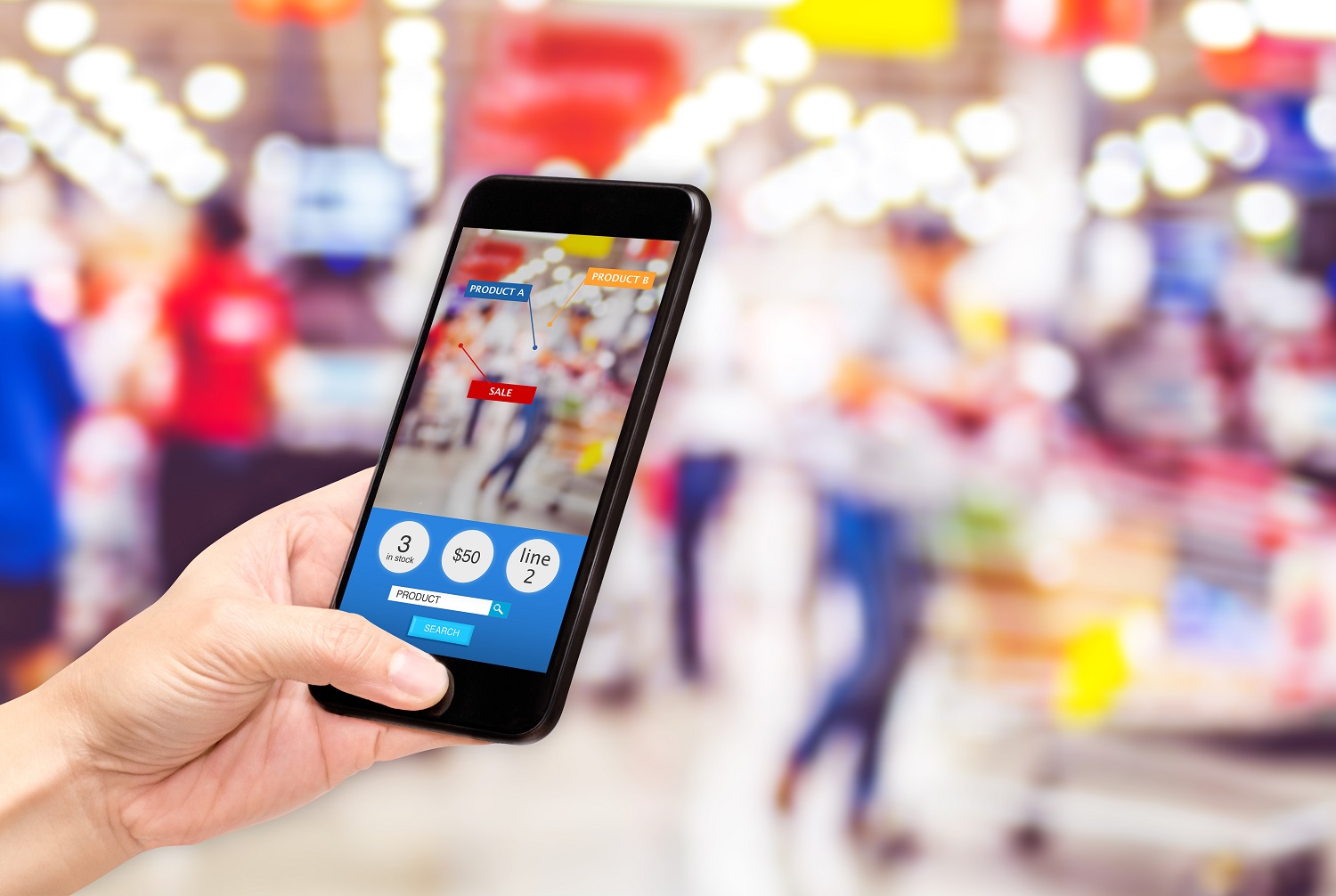COVID-19 accelerates global tech transformation for grocery industry

Digital technology is transforming the grocery industry from top to bottom. Driven by the insatiable need for food at the click of a button, that pent-up demand is only being accelerated by the spread of the COVID-19 pandemic.
With online US grocery revenue hitting $20 billion last year and sales forecast to grow by 18% year-on-year, according to eMarketer, food companies are being forced to innovate to keep pace with this technological shift and fight off increasing competition from other sectors. From virtual reality headsets that let the customer shop from the comfort of their home to robots that deliver direct to the front door, technology is set to change the US grocery landscape beyond recognition over the next five to 10 years.

Augmented and virtual reality
With more and more people working from home than before because of the pandemic, the need to deliver a highly-personalised end-to-end ecommerce solution has become paramount for grocery retailers. To this end, many, including Walmart, which filed 56 patents for drone technology alone in 2018, are enlisting technology companies and using their own in-house teams to develop a range of cutting-edge digital products and services to enhance the all-round customer experience.
At the forefront of this is augmented and virtual reality, where customers use digitally-enhanced goggles to view and select items before putting them in their virtual shopping basket. The global market for VR and AR is predicted to soar to $1.6 billion by 2025, says Goldman Sachs, with developers such as Dent Reality, Augment and Zappar forging ahead with trials of the technology, which is also being used to target shoppers with subliminal marketing as they walk through the virtual aisles.
The latest advances, some featuring holograms, are being supported by 5G and cloud-based technology. Among the most leading-edge concepts are eye-movement sensors which enable customers to order just by looking at a product on the shelf.
Autonomous checkouts and deliveries
The need to reduce human contact because of the virus is also spurring the development of automated checkouts and delivery services. The frictionless self-checkout technology, the market for which is forecast to rise 13.3% year-on-year to $7.8 billion, does away with the need for a physical till, thus speeding up the buying process and reducing the chances of infection.
Amazon Go, which launched its first store in Seattle in 2018, has been among the pioneers, with its autonomous checkout allowing customers to walk in and use the app to buy their goods without having to queue. A host of other convenience stores are planning to follow suit, including Sam’s Club, 7-Eleven and Giant Eagle, while technology firms such as Zippin, Standard Cognition and Accel Robotics are also busy developing new prototypes.
Increasing pressure too is being put on the US Federal Aviation Administration to permit the widescale use of drones for food delivery in the wake of COVID-19, particularly if there’s a second wave of infection and lockdown has to be reinforced. Drone delivery company Wing, whose devices can carry loads up to 1.3 kilograms in a 12-mile round-trip, is already dispatching food to customers in Virginia and Uber Eats plans to launch a similar service in San Diego this summer.
Self-driving vehicles, enabled by 5G technology, that can deliver food are also being developed by manufacturers such as General Motors and Ford. In December 2019, Walmart announced a new pilot programme in partnership with robotics firm Nuro to test grocery delivery using driverless technology in the Houston area. Argo AI, backed by Ford and Volkswagen, is going one step further with the development of automated delivery vans with robots that will carry orders direct to the customer’s front door.
Robo-grocery
In the same vein, Robomart, dubbed the Uber of groceries, in a tie-up with grocery store chain Stop & Shop, is testing an on-demand self-driving mini grocery store that delivers fruit and vegetables on the streets of Boston. It follows in the footsteps of Wheelys, which has already sold 900 Moby Marts across 80 countries after its successful launch in Shanghai in 2017.
In-store stock management and warehouse automation
Artificial intelligence technology is also being increasingly used in stores to monitor stock and customer behaviour, as well as for warehouse automation to sort and dispatch food, with research frim Markets & Markets projecting the warehouse systems market will more than double to $4.8 billion by 2024. Walmart is also leading the way in investment in robotics and automated warehouse systems, while Ocado Technology, Bossa Nova Robotics and Fellow Robots are spearheading the development of automated warehouse vehicles to improve efficiency in the picking and packing process.
Emerging technologies
As people have been increasingly confined in their homes, there’s been a seismic shift towards the use of food and meal kit deliveries. Again, Walmart is at the front of the queue for patents, while the likes of HelloFresh and Blue Apron are also seeing a huge uptick in demand.
The provenance of food is changing too, with the rise of plant-based protein products from manufacturers like Beyond Meat and Impossible Foods. Scientists are also experimenting with the production of cultured meat and seafood in laboratories, while the increasing adoption of vertical farming means that vegetables and other crops are now being manufactured en mass under controlled conditions, a trend that’s set to continue due to the effects of climate change on traditional agricultural methods and the increased demand for land for building developments.
Need to acquire or partner with smaller tech disruptors
Moving forward, grocery chains are increasingly investing in startups to broaden their digital footprint and harness new technologies. Walmart acquired Indian online retailer Flipkart for $16 billion in 2018 and has been fully leveraging it to gain new insights into food trends to help improve its customer experience in the US.
The US grocery industry is thriving right now, stepping up to meet an ever-growing demand for food in the wake of COVID-19. If it can only tap into these new cutting-edge technologies and implement them effectively across the board, the sky’s the limit.







